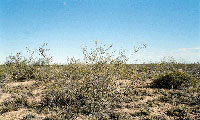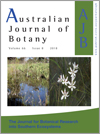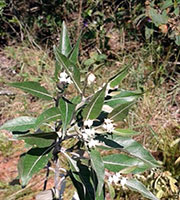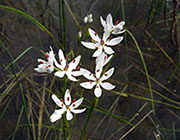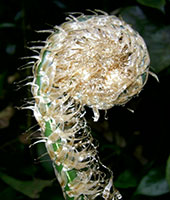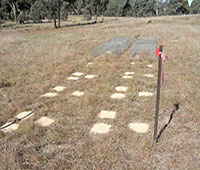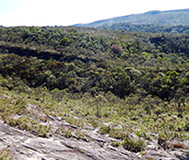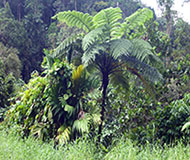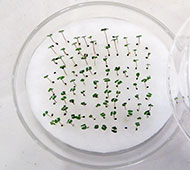Australian Journal of Botany
Volume 66
Number 8 2018
The identification of physiological and biochemical traits with functional roles in adaptation to drought is still scarce for native species of arid regions, and this knowledge would be useful to planning the conservation of these ecosystems. Our findings show that abscisic acid metabolite profiling contributes to maintaining the functioning of grasses and shrubs belonging to different functional types (e.g. evergreen vs deciduous; drought tolerant vs drought avoidant) inhabiting natural drought conditions of Patagonian semiarid shrublands.
The essential oil from leaves of Eremanthus erythropappus was extracted. Allelopathic activity of essential oil on the seed germination and radicle length of seedlings was evaluated in lettuce, tomato and in two field weeds. The most significant inhibition of seed germination was observed in field mustard. The most significant inhibitory effect on radicle length of seedlings was observed in hairy beggartick.
Ephemeral claypans in south-west Australia have largely been cleared for agricultural and urban development and the plant communities restricted to these habitats have been listed as critically endangered. Although floristically diverse, these communities are susceptible to invasion by several serious environmental weeds from South Africa. Continued active management will be required to maintain their high conservation values using control technologies developed over the last 15 years.
Phenological studies demonstrate how the environment influences plant growth and the reproductive process. We examined whether phenological events of the tropical tree fern Cyathea praecincta are driven by temperature and/or rainfall patterns. Our study showed a differential responsiveness between production of sterile and fertile leaves; the latter depended on increasing rainfall. Interactions of dependence between reproduction of ferns and rainfall can be considered a marker for future climate change.
Grassland wildflowers are increasingly being depleted by land use changes, and active management is needed to assure their future. An experiment in native grasslands has demonstrated that, with the appropriate management, it is realistic to re-establish populations using local and non-local seed sources, thus assuring a greater genetic diversity for future adaptation in a warming climate.
Functional traits of Eremanthus erythropappus in cloud forest and savanna were tested to investigate the role of environment as driver of intraspecific trait variation. All traits were different between habitats. Trees in savanna exhibit traits that enhance drought tolerance and trees in cloud forest show traits that enhance light capture.
Ornamental plants that become invasive are a global problem, but their negative impacts on biodiversity, agriculture and human health have been especially severe on the Pacific Islands. The ornamental palm Pinanga coronata was introduced to Fiji in the 1970s and our study shows that it has established in native and plantation forests, and may be displacing native tree fern species. This invasive ornamental may therefore threaten the biodiversity of Fiji and other tropical countries it is cultivated in.
Temperature, light and weight effects were examined on the germination of 14 seedlots of 10 eucalypts. Overall germination was high but varied between species and seedlots across temperatures and light conditions. Light and winter-spring/autumn temperatures resulted in higher germination than darkness and summer temperatures. Small seeds germinated better under light whereas larger seeds under darkness.
